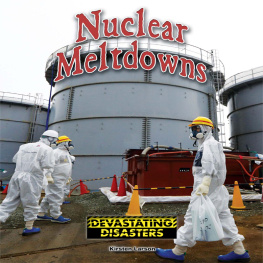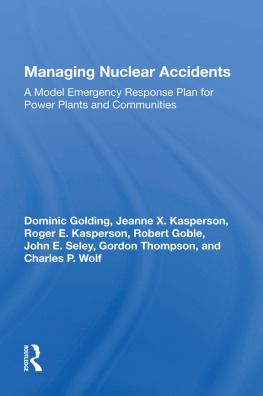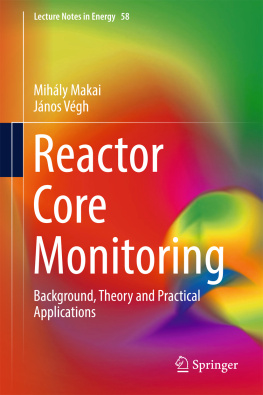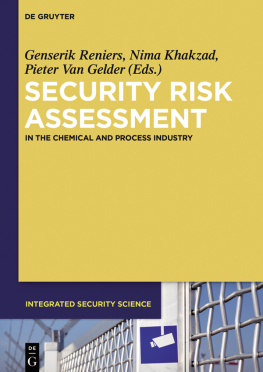Index
A
ASME PRA Standard of 2009, 12
B
Binary decision diagrams (BDDs), 90
Birnbaum importance, 14, 25, 40
C
CDF (core damage frequency), 16
CDF Contribution, 22, 31
CDF/LERF, 8889; see also LERF
10 CFR 50.69, 1516
Chemical and volume control system (CVCS), 45
Component-level importance measure, demonstrative examples of, 1785
Component-level importance measures for a component which is not involved in any CCF group, 4957
example, 5457
FC, 5152
introduction, 4951
RAW, 5254
RRW and reliability importance, 54
Component-level risk importance, 26
Conditional core damage probability (CCDP), 2930
CTs (Completion times), 18
risks, 1819
D
Design basis (DB) function, 910
E
Emergency feedwater turbine driven pump (EFW TDP), 49
ET (event trees), 18
F
FC (fractional contribution), 1314, 36
FT (fault trees), 18, 27
FT linking approach, 33
FT modules, 27
Fussell-Vesely (F-V) importance measure, 12, 1314, 17
H
High energy line break (HELB), 49
I
Inclusion-exclusion principle, 91
Initiating event (IE), 88
Inspection guidance, 2324
Integrated decision-making panel (IDP), 16, 17
L
LERF, 88
LERF (large early release frequency), 16, 17, 24, 88, 89
Limiting Conditions for Operations (LCOs), 18
Logic function, 43
M
MCUB (Mincut UpperBound) approximation, 112, 125, 130
Minimal cut sets (MCSs), 18, 3334
Mitigating systems performance index (MSPI), 24
N
NEI 00-04, 16, 1718, 29, 8889
NEI 97-04, 9
Non-safety-related equipment, 1516
Non-safety (non-class) SSCs, 9
NPPs (nuclear power plants)
overview, 12
safety analysis, 3, 5
technical specifications, 14
NPPs (nuclear power plants), risk assessment measures, 1130
background, 1112
risk-informed applications, 14 25
used in PRAs for NPPs, 1214, 2630
NRC Inspection Manual, 23
NRCs Maintenance Rule, 21
NRCs ROP, 2223
NUMARC 93-01, 2122
NUREG-1649, 2223
NUREG/CR-3385, 13, 14
NUREG/CR-4780, 60
NUREG/CR-5497, 73
NUREG/CR-5750, 32, 107
NUREG/CR-5845, 60, 73
NUREG/CR-6928, 3536, 107
P
Positive displacement pump (PDP), 45
PRA computer code risk importance measures by a, 101103
PRA model, examples based on a simplified, 105135
R
RAW (risk achievement worth), 13, 18, 20, 22, 28; see also Risk importance measures and RRW, 3435
Reactor oversight process (ROP), 15, 24
Risk importance measures
limitations of 8792
by a PRA computer code, 101 103
Risk importance of a component represented by multiple basic events, FT module, 4347
example, 4547
FC, RAW, RRW and reliability importance for component-level FT module, 44
introduction, 4344
Risk importance of component represented by a single basic event (failure mode) involved in a CCF Group, 5968
failure with CCF potential, 60 65
introduction, 59
particular CCf event, 6768
unavailability with no impact on CCF, 6567
Risk importance of component represented by a single basic event not involved in a CCF Group, 3141
FC for a single basic event, 3537
introduction, 3134
RAW and RRW, 3435
RAW for a single basic event, 3738
realiability importance for a single basic event, 3941
RRW for a single basic event, 39
Risk importance of component represented by multiple basic events (failure modes) involved in CCF groups, 6977
failure with CCF potential, 7376
introduction, 6973
particular CCF event, 77
unavailability with no impact no CCF, 77
RiskSpectrum, 12, 79, 101103, 105, 107108
RRW (risk reduction worth), 13, 16, 17, 20, 22, see also RAW (risk achievement worth); Risk importance measures
S
SF (Surveillance frequency), 18
risks, 2021
SRP Section 3.2.2, 10
SSC (system, structure, and component), deterministic principles of safety importance, 710; see also Risk importance measures
Station blackout (SBO), 49
Surveillance requirements (SRs), 18
T
Technical specifications (TSs) for NPPs, 18; see also NPPs (nuclear power plants)
U
USNRC (United States Nuclear Regulatory Commission), 8
Regulatory Guide 1.26, 8
Regulatory Guide 1.70, 7
Regulatory Guide 1.160, 2122
Regulatory Guide 1.174, 89
Standard review Plan (SRP), 89
Appendix A. Example from practicecalculation of risk importance measures by a PRA computer code
This section describes, as an example from the practice, how the risk importance measures for basic events are calculated by RiskSpectrum. Similar examples can be found with other PRA tools. RiskSpectrum calculates the following importance measures for the basic events [39]: Fussel-Vesely importance, risk decrease factor (RDF), fractional contribution, risk increase factor (RIF). (The quotation marks are used to point out RS terminology.) Additionally, sensitivity calculations are done which can be related to the reliability importance as discussed in this monograph.
Using the symbols from the Theory Manual [39], the Fussel-Vesely importance for the basic event i is calculated as:
where Q TOP refers to top event probability and the term Q TOP ( MCS including i ) refers to the top event probability based only on the minimal cutsets which include basic event i .
The RDF (which corresponds to the RRW) is calculated as:
where Q i refers to the probability of basic event i . The term Q TOP ( Q TOP = 0) represents the top event probability recalculated with probability Q i set to zero.
The fractional contribution is calculated from RDF as:
It is noted that this equation corresponds to (5-18). Basically, the measures Fussel-Vesely importance and fractional contribution, as applied to the basic events, have the same meaning. They are distinguished because RiskSpectrum calculates them in different ways. The first one is calculated from actual contribution, the second one from its complement. In practical applications, calculated values are the same or very close to each other. (This would remain to be the case as long as all the basic events included in minimal cutsets have small probabilities.)
Finally, the RIF (which corresponds to the RAW) is calculated as:
where the term Q TOP ( Q i = 1) refers to the top event probability recalculated with probability Q i set to 1.
Sensitivity calculations for basic event i are done by dividing and multiplying the probability Q i by a sensitivity factor and recalculating the corresponding top event probabilities. (Sensitivity factor can have any value larger than 1, with default set to 10.) Calculated, also, is the sensitivity value defined as:

















